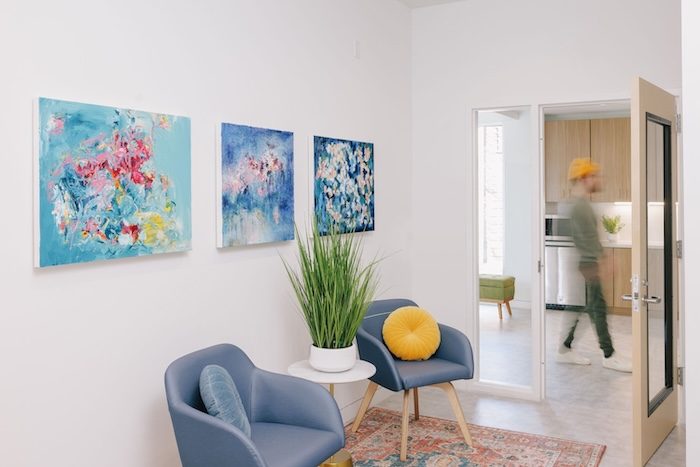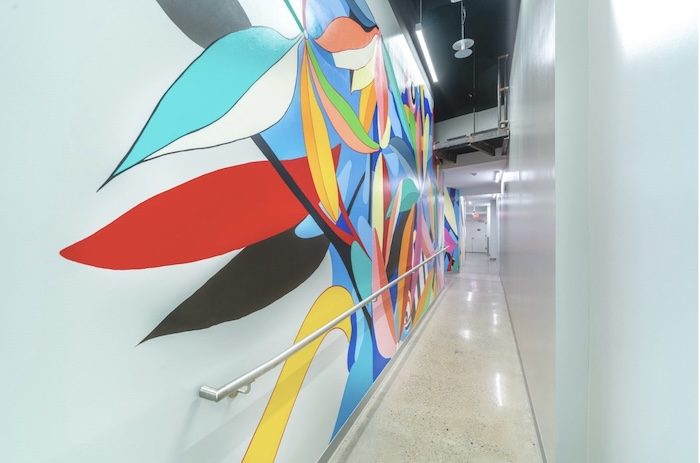A curated art collection is a thoughtfully chosen group of art piecesthat work together to convey a particular theme, message, or aesthetic. These collections are effective for creating a clear brand identity that appeals to customers. By thoughtfully selecting items that work together, you can create a consistent theme that attracts customers and remains memorable. A well-curated art collection gives customers insight into your brand’s personality and values, making it easier for them to relate to your story and feel confident in their choices. What makes an effective collection, how you can tailor it to resonate with your target market, and ultimately how you can use curation to leave an impactful mark in your industry? Let’s find out.
Principles of Effective Curation
Effective curation is about selecting items that effectively communicate your brand’s values while creating a unified and meaningful experience for your audience. The following principles can guide you in crafting a successful curated collection:
Brand Alignment: The first step is ensuring that each piece effectively represents your brand’s core values. Identify what differentiates your brand—be it creativity, reliability, heritage, or modernity—and determine which emotions you want to convey, such as innovation, warmth, luxury, or sustainability. These emotions should be embedded in each aspect of the collection, including the color scheme, the choice of artistic styles, and the thematic elements that bind it all together.
For example, a brand focused on innovation may incorporate abstract compositions to communicate unconventional thinking. Dynamic forms can signify movement, adaptability, and progress, while bold, vivid colors convey energy, ambition, and forward-thinking attitudes. A luxury-focused brand might use classic elements, rich textures, and a subdued yet sophisticated color palette to project exclusivity and timelessness.
Beyond visual themes, consider the message conveyed by the materials used. For a brand focusing on sustainability, incorporating pieces made with reclaimed or eco-friendly materials strengthens the brand alignment further. Similarly, the use of local artists can be a powerful statement for brands that want to foster a sense of community or emphasize authenticity.
Ultimately, each element must not only align visually but also contribute to the underlying brand message. The style, medium, and even the cultural references of each piece should resonate with what your brand stands for. The end goal is to establish a visual narrative that consistently reinforces your brand identity, making it memorable and instantly recognizable to your audience.

These works by Juliet Anne Fiss use complementary colors and abstract styles to create a cohesive and inviting atmosphere, reinforcing the brand’s emphasis on creativity and modern comfort.
Cohesion and Purpose: Cohesion involves integrating each component to create a consistent and compelling experience, where every element contributes meaningfully to the brand’s narrative. This means thinking about the relationships between individual pieces—how one artwork complements another, and how the overall collection embodies the essence of your company or space. For example, colors should not only match but also symbolize aspects of your brand values, such as using shades of green to represent growth or sustainability. Textures and forms should convey specific emotions or responses that align with your core messaging. For more on this topic , see Creating a Corporate Art Style: 6 Steps to Really Wow.
The placement of each item should guide the viewer’s experience in a seamless progression, ensuring that the visual and thematic flow remains uninterrupted.
Adaptation to Context: Curation should be customized to the physical environment, as surroundings shape how people perceive and interact with art. In any physical space, elements like spatial layout, lighting, and placement of items are fundamental in creating an experience that is both immersive and meaningful. Thoughtfully positioning pieces helps guide viewers through a journey that reflects the brand’s message.
Consider factors such as lighting intensity and direction to highlight the most important features of a piece, or how different textures and materials interact with ambient light to create a specific mood. Placing larger, more striking works near entry points can quickly capture attention, while more intricate pieces can be placed in areas where viewers are likely to spend more time, inviting closer inspection.
In a high-end kitchenware store, for example, effective curation can involve using tangible elements to establish a distinct atmosphere. Artisan food photography can convey a message of quality and craftsmanship, while vintage illustrations may evoke a sense of history and tradition. Abstract works featuring natural motifs might be used to create a connection to nature, fostering an atmosphere that is both welcoming and authentic. Every piece should contribute to the store’s atmosphere, emphasizing the brand’s core values in a way that feels organic and deliberate.
Additionally, consider how viewers move through the space. Strategic placement can subtly influence the flow of foot traffic, encouraging visitors to explore the entire area while creating distinct zones within the environment. This can lead to more profound engagement, as customers feel guided through an experience that unfolds naturally, reinforcing both the artistic elements and the brand identity.

This mural by Eric Inkala transforms a narrow corridor into an engaging passage, adding vibrancy and creating a sense of movement.
Audience Engagement: Curate with your target audience in mind. Understanding their preferences will help you choose pieces that connect deeply with them.
Leveraging data is crucial for tailoring your curated collection to your audience’s evolving tastes. Rather than relying on assumptions, use a variety of real-time metrics and feedback sources to develop a more precise understanding of what resonates most. Consider these approaches:
- Social Media Engagement: Track performance metrics of posts featuring different styles or themes of art. High engagement on posts featuring abstract or colorful pieces can reveal audience preferences. Dive deeper by analyzing comments to understand why certain styles resonate—whether it’s the color palette, subject matter, or emotional tone.
- Website Interaction: Use detailed analytics tools, like heatmaps, to understand which parts of your website attract the most attention. Identify which artworks are getting the most clicks, longest viewing times, or highest interaction rates. These insights help you understand which visual elements are compelling to your audience and can inform future decisions on what types of pieces to feature prominently.
- In-Store Feedback: Collect both direct and indirect feedback from in-store interactions. Observe which areas of your store customers gravitate towards and take note of the artworks that generate conversations. For more in-depth insights, conduct short interviews or use QR codes placed near artworks that link to surveys, allowing customers to provide feedback at their convenience. Direct comments can provide qualitative data that helps fine-tune your collection to reflect what people genuinely appreciate.
- Customer Purchase Histories: Analyzing what customers purchase over time can reveal significant trends in preferences. If certain styles of art consistently sell well, it suggests a strong connection between those themes and your brand’s audience. Use this data to replicate successful elements in future collections or adapt underperforming pieces to better fit evolving tastes.
- Event-Specific Engagement: Evaluate data from special events such as exhibit launches or exclusive in-store shows. Understanding which pieces drew the most attention during these events and soliciting attendee feedback can help determine which aspects of the curation were most effective. This data can guide how to organize similar events or which themes to expand on in future collections.
By combining these data-driven insights, you can create a collection that not only visually appeals but also aligns precisely with the tastes and interests of your audience. This ensures a more engaging and memorable experience that evolves alongside your audience, ultimately deepening their connection with your brand.
Keeping Your Collection Fresh and Relevant
To create an enduring impact through curated collections, consider how your selections can evolve with changing trends and audience preferences. Curation is not a static process; it should be responsive and adaptable, allowing your brand’s visual narrative to grow over time. Think about periodically refreshing your collection, introducing limited-time exhibits or seasonal art that complements existing pieces while bringing in something new to spark interest. Collaborations with emerging artists or incorporating interactive features can also keep the collection dynamic, ensuring that it continually captivates and draws in both loyal customers and new audiences. The focus should always be on maintaining relevance while staying true to your core values. By doing so, your curated collection will continue to be a powerful tool for engagement and differentiation in the market.
